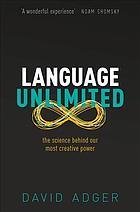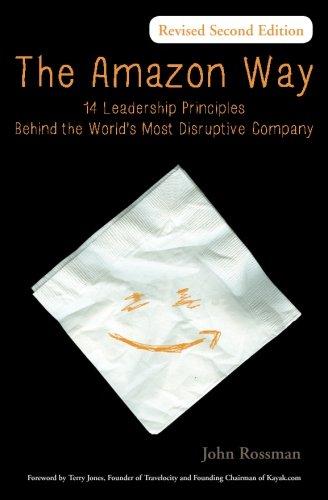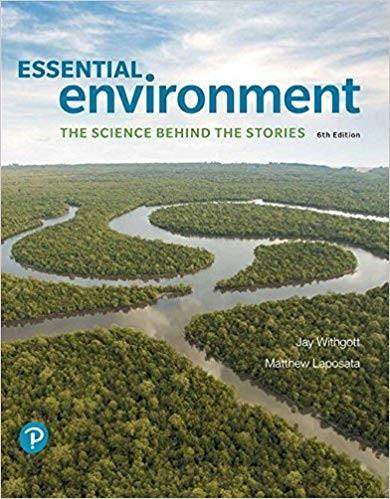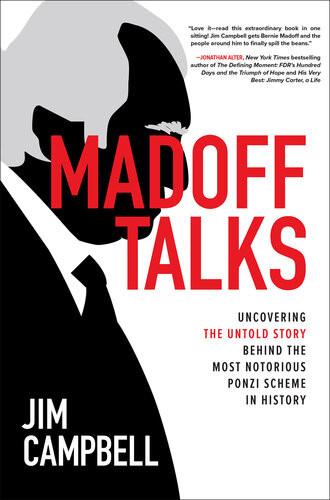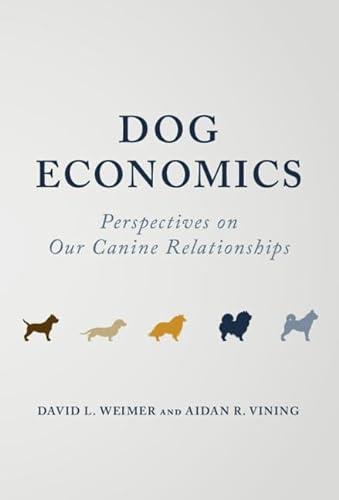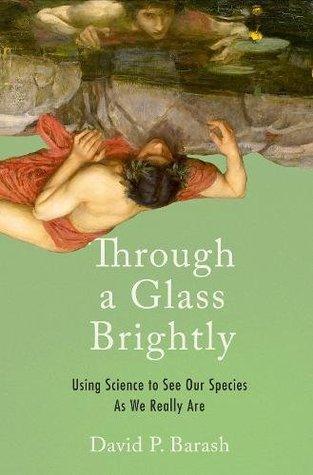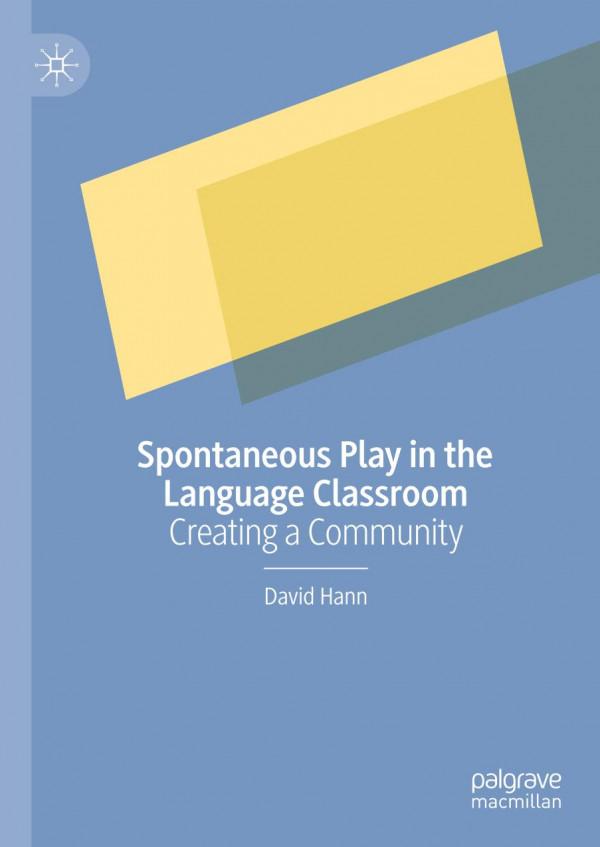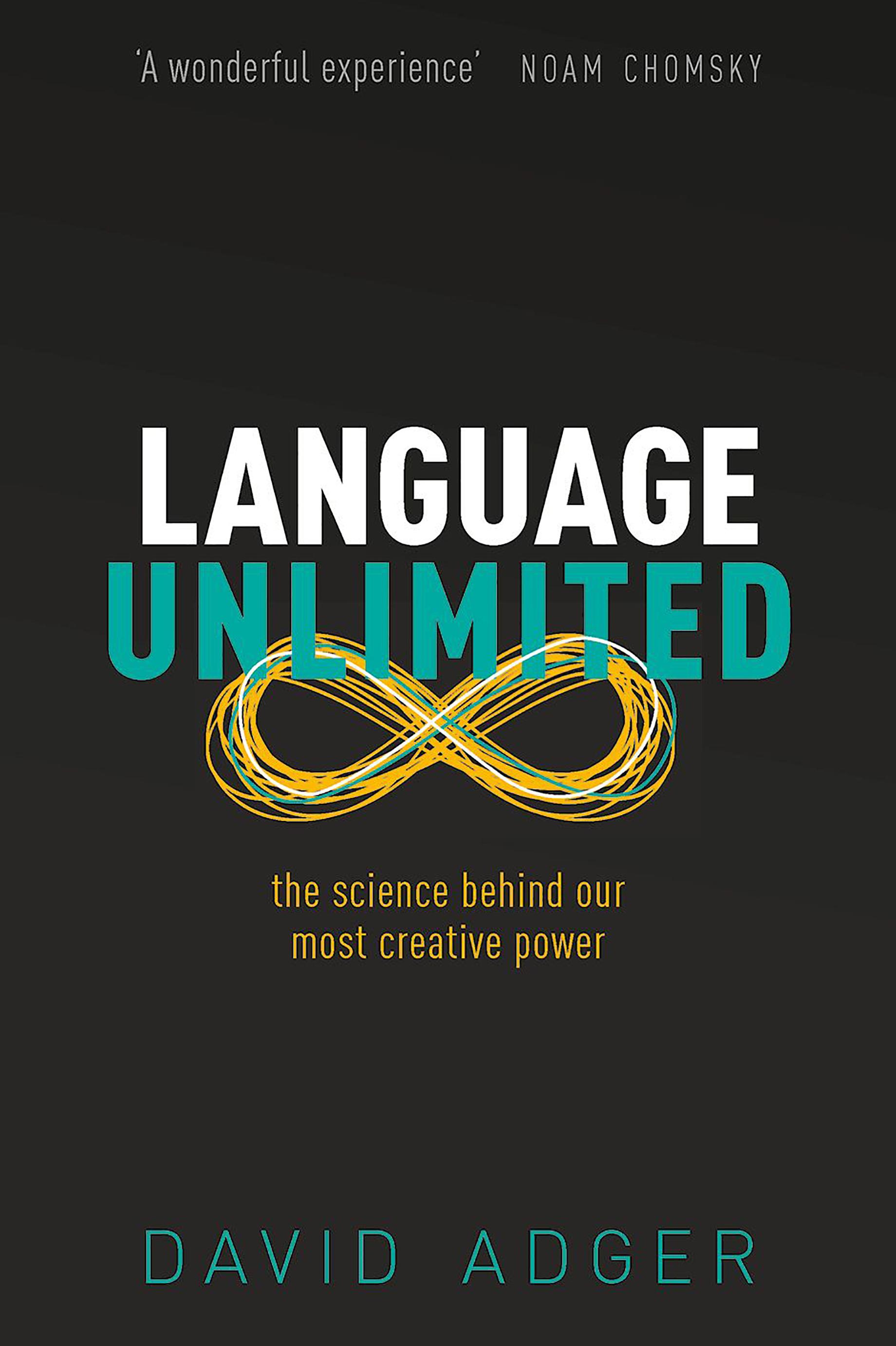1 CREATINGLANGUAGE
Iwanttobeginthisbookbyaskingyoutomakeupasentence. Itshouldbemorethanafewwordslong.Makeoneupthat, say,spansatleastonelineonthepage.Nowgotoyourfavourite searchengineandputinthesentenceyou’vemadeup,ininverted commas,sothatthesearchenginelooksforanexactmatch.Now hitreturn.
Question:doesyoursentenceexistanywhereelseontheinternet?I’vetriedthismanytimesandeachtime,theanswerisno.I’m guessingthatthatwasyourexperiencetoo.Thisisn’tjustaside effectofusingtheinterneteither.TheBritishNationalCorpusis anonlinecollectionoftexts,somefromnewspapers,somethat havebeentranscribedfromrealconversationsbetweenpeople speakingEnglish.Thereareover100millionwordsinthiscollection.Itookthefollowingsentencefromthecorpusatrandom, andsearchedforitagain,toseeifitappearedelsewhereinthemillionsofsentencesinthecorpus.IthendidthesameonGoogle.
It’samazinghowmanypeopleleaveoutoneormoreofthoseessential details.
Therearenootherexamples.Itseemscrazy,butsentencesalmost neverreoccur.
Thinkaboutyoursenseoffamiliaritywiththesentencesyou hearorsay.NoneofthesentencesI’vewrittensofarfeelnewor strange.Youaren’tsurprisedwhenyoureadthem.Youjustaccept themandgetonwithit.
Thisis,ifyouthinkaboutit,quiteremarkable.Thesesentences arenewtoyou,infactperhapsnewtothehumanrace.Butthey don’tseemnew.
Thefactthatsentenceshardlyreoccurshowsusthatweuseour languageinanincrediblyrich,flexible,andcreativeway,while barelynoticingthatwearedoingthis.Virtuallyeverysentence weutterisnovel.Newtoourselves,and,quiteoften,newto humanity.Wecomeupwithphrasesandsentencesasweneed to,andwemakethemexpresswhatweneedtoexpress.Wedo thiswithincredibleease.Wedon’tthinkaboutit,wejustdoit. Wecreatelanguagethroughoutourlives,andrespondcreatively tothelanguageofothers.
Howcanwedothis?Howcanhumans,whoarefinitecreatures,withfiniteexperiences,uselanguageoversuchanapparentlylimitlessrange?
Thisbookisananswertothatquestion.Itisanexplanation ofwhatitisabouthumanlanguagethatallowsustocreatesentencesasweneedthem,andunderstandsentenceswe’venever heardbefore.
Theanswerhasthreeparts.
Thefirstisthathumanlanguagesareorganizedinaspecial way.Thisorganizationisunique,asfarasweknow,tohumans. Sentenceslookasthoughtheyconsistofwordsinasequence, butthatisnothowthehumanmindunderstandsthem.We sense,instead,astructureineverysentenceofeverylanguage.We cannotconsciouslyperceivethisstructure,butitcontoursand limitseverythingwesay,andmuchofwhatwethink.Oursense
oflinguisticstructure,likeourothersenses,channelsparticular aspectsofourlinguisticexperienceintoourminds.
Thesecondpartoftheansweristhatlinguisticstructurebuilds meaninginahierarchicalway.Wordsclustertogetherandthese clustershavespecialproperties.Asimplesentence,like Lillybit Anson,isacomplexweaveofinaudible,invisiblerelationships. Thewords bit and Anson clustertogether,creatingacertainmeaning. Lilly connectstothatcluster,addinginadifferentkindof meaning.LawsofLanguage,universaltoourspecies,governthe waysthatthishappens.
Thefinalpartoftheanswertellsuswherethisspecialstructure comesfrom,andexplainswhywecanuseourlanguageswith suchflexibilityandcreativity.ThroughoutNature,whenlifeor matterisorganizedinahierarchicalway,weseesmallerstructuresechoingtheshapeofthelargeronesthatcontainthem.We findthispropertyofself-similarityeverywhere.Afernfrondcontainswithinitsmallerfronds,almostidenticalinshape,whichin turncontainyetsmallerones.Lightning,whenitforksfromthe sky,branchesdowntoearthoverandover,eachnewforkforminginthesamewayashigherforks,irrespectiveofscale.From slimemouldtomountainranges,fromnarwhaletuskstothe spiralingofgalaxies,Natureemploysthesameprinciple:larger shapesechothestructureofwhattheycontain.Iargue,inthis book,thathumanlanguageisalsoorganizedinthisway.Phrases arebuiltfromsmallerphrasesandsentencesfromsmallersentences.Self-similarityimmediatelymakesavailableanunending collectionofstructurestothespeakerofalanguage.Theinfinite richnessoflanguagesisaside-effectofthesimplestwayNature hasoforganizinghierarchies.
Thesethreeideas,thatwehaveasenseoflinguisticstructure, thatthatstructureisgovernedbyLawsofLanguage,andthatit
emergesthroughself-similarity,provideacoherentexplanation ofcreativepowersthatlieattheheartofhumanlanguage.
I wrotethisbookbecauseIthinkthatthethreecorepositionsit takesaredeepexplanationsofhowlanguageworks.Eachofthese ideasisabouthowourmindsimposestructure,ofaparticular sort,onourexperiencesofreality.
Overrecentyears,however,analternativetotheseideas,with animpressivepedigree,hasemerged.Thisalternativefocusses notonhowthemindimposesstructureonourlinguisticexperiences,butratheronhowwehumanshaveverygeneralpowerful learningabilitiesthatextractstructurefromexperience.
Language,fromthisperspective,islikemanyotheraspectsof humanculture.Itislearnedfromourexperiences,notimposed uponthembylimitsofthemind.
ThisviewgoesbacktoDarwininhisbook TheDescentofMan. Theideaisthatourmindsarepowerfulprocessorsoftheinformationinourenvironment,andlanguageisjustonekindof information.Thewaythatlanguageworksdependstotallyon whatlanguageusershaveheardorseenthroughouttheirlives. Thisideaplacesanemphasisnotonthelimitsofthemind,but ontheorganizationoftheworldweexperience.
Thesetwodifferentperspectivesonhowthemindencounters theworldarebothimportant.Thisbookisintendedtoshowhow thefirstapproachisbettersuitedtolanguageinparticular.
Howwouldlanguagelook,fromaperspectivewhereitsstructureemergesfromourexperiences?
Language,Darwinsaid,shouldbethoughtofinthesameway asalltheothermentaltraits.Darwingaveexamplesofmonkeys usingdifferentcallstosignifydifferentkindsofdanger,and
arguedthatthiswasanalogoustohumanlanguage,justmore limited.Hearguedthat,sincedogsmayunderstandwordslike ‘fetch!’andparrotsmightarticulate‘PrettyPolly’,thecapacity tounderstandandimitatewordsdoesnotdistinguishusfrom otheranimals.Thedifferencebetweenhumansandanimalsin language,asineverythingelse,isamatterofdegree.
...theloweranimalsdifferfrommansolelyinhisalmost infinitelylargerpowerofassociatingtogetherthemost diversifiedsoundsandideas;andthisobviouslydependson thehighdevelopmentofhismentalpowers.1
Darwinbelievedthathumanshaverichandcomplexlanguage becausewehavehighlydeveloped,veryflexible,andquitegeneral,intellectualabilities.Theseallowustopasson,augment, andrefinewhatwedo.Theyunderpinourculture,traditions, religions,andlanguages.Thevastrangeofdiversityweseein cultureandlanguageisbecauseourgeneralmentalpowersare soflexiblethattheyallowhugevariation.Darwinarguedthatthis culturaldevelopmentoflanguageaugmentedourabilitytothink andreason.
Moreconcretely,theideaisthatwecanunderstandsentences we’veneverproducedbecausewe’repowerfullearnersofpatternsingeneral.Weapplythattalenttolanguage.Wehearsentencesaswegrowup,andweextractfromthesecertaincommon themes.Forexample,wemighthearcertainwordstogetherover andoveragain,say, giveMummythetoy.Westorethisasapattern,alongside givemethebanana.Aswedevelop,wegeneralize theseintomoreabstractpatterns,somethinglike giveSOMEONE SOMETHING,wherethecapitalizedwordsstandinforlotsof differentthingsthathavebeenheard.2 Oncethisgeneralpattern isinplace,wecanuseittomakenewsentences.Thestructure ofourlanguageemergesfromwhatweexperienceofitaswe
growup,combinedwithverygeneralskillswehavetocreateand generalizepatterns.Thesameskillswe’duseinothercomplex activities,likelearningtobakeacake,ortieshoelaces.
Otheranimalshavepatternmatchingabilitiestoo,but,inDarwin’swords,their‘mentalpowers’arelessdeveloped.Thereason humansaretheonlyspecieswithsyntax,fromthisviewpoint, isthehugegulfbetweenusandotheranimalsinourabilityto generalizepatterns.Wehavemoreoomph.
Thisbookwaswrittentomaketheargumentthatit’snota matterofmoreoomph,it’samatterofdifferentoomph!Weare notpowerfulpatternlearnerswhenitcomestolanguage.We arelimited—onlyreallyableuseonekindofpatternforsyntax, ahierarchicalone.ThisiswhatI’llargueinthefirsthalfofthe book.I’llalsoarguethatpatternsthatdependonsequencesof wordsareinvisibletous,whilesyntactichierarchyisunavailable tootheranimals.Thoughwedoofcourselearnourlanguages aswegrowup,whatwecanlearnisconstrained.Ourlimited mindsareoblivioustothecontinuousinlanguage,andtothe sequential,andtomanypossiblekindsofpatternsthatother animalscanpickupon.Thesourceofhierarchyinlanguageis notcreatingpatterns,storingthem,andgeneralizingthem.It’s aninnersensethatcan’thelpbutimposehierarchicalstructure, andit’stheself-similarityofthatstructurethatcreateslimitless sentences.That,ratherthanhighlydevelopedmentalpowers, underpinsourincredibleabilitytouselanguagecreatively.That isourdifferentoomph.
Unlessyou’reaneditor,orateacher,youprobablydon’tnotice thehundredsorthousandsofsentencesyoucomeacrossduring yourday.Mostflybyyou.Inasenseyouhearwhattheymean, withouthearingwhattheyare.Butsometimesyoumightcome
acrosssomeonewritingorsayingsomethingandthink‘That’sa bitodd.’Maybeaverbismissing.Maybethesentencestartsbut doesn’tend.Maybeitdoesn’tmeanwhatthespeakerobviously wantedittomean.Youknowcertainthingsaboutthesentences ofyourlanguage,thoughyouusuallydon’tstoptothinkaboutit. Herearesomeexamples.Whichofthemareclearlysentences ofEnglish,andwhichare‘abitodd’?
Zfumkxqviestblwzzulnxdsorjjkwwapotudjjqltuykualfzgixz,zfna nguizyqrjgnsougdd.
Sunglassestraumatizetolikesthatwaterbyperplexedusuallyis tinnituswithamoebaan.
Anamoebawithtinnitusisusuallyperplexedbywaterthatlikesto traumatizesunglasses.
Acatwithdentaldiseaseisrarelytreatedbyavetwhoisunableto cureit.
Ifyou’reanativeEnglishspeaker—andprobablyevenifyou’re not—youhaveprobablyjudgedthatthefirsttwoarenotgood sentencesofEnglishbutthelattertwoare.Ofthese,thelastone isacompletelynormalEnglishsentence,whiletheoneaboutthe amoebaisweird,butdefinitelyEnglish.
IfIgiveyoumanymoreexamplesofthissort,yourjudgments abouttheiroddnessarelikelytoagreewithmine,andwiththose ofmanyothernativeEnglishspeakers.Notentirely,ofcourse. TheremaybewordsthatIdon’tknowthatyoudo,orviceversa. Ourdialectsmightdifferinsomeway.Imightallow thedogneeds fed,whileyoumightthinkthisshouldbe thedogneedsfeeding.You mighthavelearnedatschoolthatprepositionsarenotsomething thatweendsentenceswith—ornot!Imightnotcareaboutwhat theytaughtatschool.Youmightbeacopyeditor,armedwitha redpentoswiftlyexciseeverysplitinfinitive.Imightthinkthat splitinfinitiveshavebeenpartofEnglishsinceChaucer,andbe
veryhappywithphraseslike toswiftlyexciseeverysplitinfinitive.If weputtheseminordifferencesaside,however,we’dagreeabout mostofitandwecouldagreetodisagreeabouttherest.
Howdowealldothis?Whydowemostlyagree?
Everyspeakerofeverylanguagehasastoreoflinguisticinformationintheirmindsthatallowsthemtocreateandtounderstandnewsentences.Partofthatstoreisakindofmentaldictionary.Itgrowsoverourlives,andsometimesshrinksaswe forgetwords.Itisafinitelistofthebasicbitsofourlanguage. Butthat’snotenough.Wealsoneedsomethingthatwillallowus tocombinewordstoexpressourselves,andtounderstandthose combinationswhenwehearthem.
Linguistscallthisthementalgrammar.Itiswhatisresponsible fordistinguishingbetweenthefirsttwoexamplesandthelatter two.Aseveryspeakergrowsup,theylearnwords,buttheyalso developanabilitythatallowsthemtoputwordstogethertomake sentencesoftheirlanguages,tounderstandsentences,andto judgewhethercertainsentencesareunremarkableorodd.
Butdowereallyneedamentalgrammar?Maybeallweneedis thementaldictionary,andwejustputwordstogetherandfigure outthemeaningsfromthere.Knowingwhatthewordsmean isn’t,however,enough.Themeaningsofsentencesdependon morethanjustthemeaningsofthewordsinthem.Takeasimple examplelikethefollowing:
Thefleabitthewoman.
Usingexactlythesamewordswecancomeupwithaquite differentmeaning.
Thewomanbittheflea.
Howweputwordstogethermattersforwhatasentencemeans. Justknowingthemeaningsofwordsisn’tsufficient.There’s somethingmoregoingon.
Thesetwosentencesalsoshowusthathowlikelyoneword istofollowanothermakesnodifferencetowhetherwejudge asentencetobeEnglishornot.AbitofquickGooglinggives aboutamillionresultsforthephrase‘bitthewoman’and justeightresultsfor‘bittheflea’.Thismakescompletesense ofcourse.Wetalkmoreaboutpeoplebeingbittenthanfleas beingbitten.Butthelikelihoodofthesetwosentencesmakes nodifferenceastowhethertheyarebothEnglishornot.One ismoreprobablethantheother,buttheyarebothperfect English.
Thementalgrammarcan’tbereducedtothementaldictionary plusmeaning,orfrequency.Weneedboththementaldictionary andthementalgrammartoexplainhoweachofusspeaksand understandsourlanguage(s).
Thequestionofwhetherwehavementalgrammarsornot isn’treallydisputed.Whetherwethinkofthehumancapacity forsyntaxasemergingfromthestructureofexperience,orfrom theparticularlimitsofourminds,westillneedtosaythatthe generalrulesofourparticularlanguagesaresomehowstoredin ourminds.
Butwecanusethenatureofwhatourmentalgrammarsmust beliketobegintodigintothequestionofthesourceofsyntax.Is itpartofournatureashumanbeings,orisitsomethingwepick upfromtheworldweexperience?
ToaskacertainkindofquestioninEnglish,youuseawordlike what, who, where, when.Takeascenariowheresomeoneischatting awayandmentionsthatmycat,Lilly,hadcaughtsomethingin thegarden.Ididn’tquitehearthefulldetails,soIask:
WhatdidyousaythatLillyhadcaught?
Here,theword what isaskingaquestionaboutthethingthat Lillycaught.Although what ispronouncedatthestartofthe sentence,itisreallymeantattheend.Afterall,wesay Lillycaught something.
Inmanyotherlanguages,likeMandarinChinese,Japanese,or Hindi,toaskaquestionlikethisyou’djustleavethewordfor what rightnexttothewordfor caught,givingtheequivalentof Yousay Lillycaughtwhat? Here’showthislooksinMandarinChinese:
Nǐ shuoLìlìzhuashénme YousayLillycatchwhat
TheChineseword shénme correspondstoEnglish what,andit comesaftertheverb zhua,whichmeanscatch.That’sthenormal orderofwordsinaChinesesentence.Inaquestion,nothing changes.
Let’sthinkabouthowtocapturethisdifferenceifwhatwehave learnedofourlanguage,ourmentalgrammars,developsthrough noticingandstoringpatternsfromourexperiences.Imagine aperson,Pat,whosementalgrammargrowsandisrefined overtimeinthisway.Patlearnsthroughnoticing,andstoring, patterns.
IfPatgrewupspeakingMandarinChinese,theywouldlearn totreatquestionwordsnodifferentfromnon-questionwords. IfexposedtoEnglish,theywouldlearnthataquestionwordis placedatthestartofthesentence.Pat’smentalgrammarinthis lattercasewouldcontainastatementsomethinglikethis:
Ifyouwanttoaskaquestionaboutathing,atime,aplaceetc.,use awordlike what, when, where,etc.oraphraselike whichX,and placethisatthestartofthesentence.
Patdoesn’tconsciouslyknowthis,butsomethingaboutPat’s mindmakesthembehaveaccordingtothispattern.Pathas
unconsciouslylearnedhowtomakeandunderstandcertain questionsinEnglish.
Theword that,aswejustsawintheexampleabove,isusedin Englishafterwordslike say, think, believe,andsoon,tointroduce whatissaid,thought,orbelieved.When that introducesasentenceinthisway,itisoftenoptionalinEnglish.Weseethisin sentenceslikethefollowing:
AnitasaidLillyhadcaughtamouse.
Anitasaid that Lillyhadcaughtamouse.
Wecanputtheword that inhere,orleaveitout.Bothsentences areperfectlyfinewaystoexpresswhatwemeanhere.
It’snotatallsurprising,then,thatwecanleaveouttheword that whenweaskaquestiontoo.Bothofthesenextexamplesare perfectlyfinewaysofaskingthesamequestion:
WhatdidAnitasayLillyhadcaught?
WhatdidAnitasay that Lillyhadcaught?
HowwouldPat’smentalgrammarlookiftheywereanEnglish speaker?Theywouldhavelearnedthattheword that isoptional aftertheverb say,andotherverbslikeit,sotheirmentalgrammar wouldcontainsomethinglikethisgeneralization:
Optionallyputtheword that afterverbslike say, believe, think ...
Sofar,sogood.Pat’smentalgrammarcontainsthesetwopatterns,andmanymore.
Butnowlet’simagineIhadhadadifferentconversation. Imaginethediscussionwasaboutoneoftheneighbourhood catscatchingafroginmygarden.IfIwanttoidentifythecat, Icanask:
WhichcatdidAnitasayhadcaughtafrog?
Asuperficialdifferencebetweenthesetwoquestionsiswhether weareaskingaboutwhatwasbeingcaught,orwhodidthe catching.
Giventhattheword that isoptionalafter say,weexpectPatto thinkthatthefollowingsentenceshouldalsobefine: WhichcatdidAnitasay that hadcaughtafrog?
FormostspeakersofEnglish,though,thissentenceis‘abitodd’. Itismuchbetterwithoutthe that.
ThisposesaproblemforPat.Theywouldbeledtothewrong conclusionaboutthissentence.Itisaquestion,using whichcat, and,asexpected, whichcat occursatthestart.Pat,asweknow, haslearnedapatternwhichallowstheword that toappearasan optionafter say.Thesentencematchesthepattern:wehavetaken theoptiontoputintheword that.ThetroubleisthatPat,whoisa goodpatternlearner,wouldthinkthissentenceisperfectlyfine. ButmostspeakersofEnglishthinkit’snotfine—it’sdecidedly odd.ThissuggeststhatmostspeakersofEnglish,unlikePat,are notgoodpatternlearners.
Thisargumentdoesn’tprovethatthepatternlearning approachiswrong.RealEnglishspeakerscouldbemore sophisticatedthanPatis.
Forexample,itcouldbethatchildrenlearningEnglishdolearn patternslikePatdoes,andusethosepatternstopredictwhat theywillhear.Theyexpecttohearsentenceslike Whatdidyousay that Lillycaught?.But,theexplanationgoes,theyneverdo.This meansthatwhattheyexperiencedoesn’tmatchupwiththeir expectations.Thewaythatthechildrendealwiththisistostore anexceptiontothepatterntheyhavelearned.Inthisscenario,the children’sexperienceswouldcontainenoughstructuretohelp themcometoamorecomplexpattern.
Thisisaninterestingidea,whichwecantest.In2013,two linguists,LisaPearlandJonSprouse,didacarefulstudyofthe
CREATINGLANGUAGE·13 speechdirectedatyoungchildrenwhoareacquiringEnglish. Theylookedatover11,000realexampleswhereparents,orother caregivers,speaktotheirchildren.3
Theyfoundthatparents,whentheyaskedtheirchildrenthese kindsofquestions,almostalwaysdroppedtheword that.They didthiswhethertheywereaskingaquestionaboutwhathadhad somethingdonetoit,orwhatwasdoingsomething.Itmadeno difference.Theparentsnevertooktheoptiontoput that after wordslike say, believe,etc.Thismeansthatthechildrendidn’tever gettheinformationtheywouldneedtolearnthattherewasa differencebetweenthetwotypesofquestions.
IfwethinkaboutthisfromPat’sperspective,thesyntaxof Englishiscompletelymysterious.Pat’smentalgrammarconsists ofpatternsthey’velearnedfromtheirexperiences.IfPearland Sprouseareright,Patcouldn’thavelearnedtheexceptiontothe patternthatallows that todisappear.Pat’sexperiences,which weareassumingarejusttheexperienceschildrenlearning Englishhave,aren’trichenoughtolearnanexceptiontothe generalizationaboutwhen that appears.AdultEnglishspeakers’ mentalgrammars,however,clearlyhavethatexceptioninthem. ThisseemslikeastrongargumentthatEnglishspeakersdon’t worklikeourimaginaryfriendPat.Theyaren’tsimplygood patternlearners.
Intriguingly,manyotherlanguagesbehaveinthesamewayas English,eventhoughtheselanguagesarenotrelatedtoEnglishor toeachother.Forexample,JasonKandybowiczstudiedtheNupe language,spokeninNigeria,andfoundexactlythesamepattern there.Here’showyousay WhatdidGanasaythatMusacooked? in Nupe,withawordbywordtranslation:4
KéGanagàngànánMusaduo? WhatGanasaythatMusacooko
TheorderofwordshereisquitesimilartoEnglish.Thelittleword o attheendmarksthataquestionisbeingaskedandtheword
14·CREATINGLANGUAGE
gànán istheequivalentofEnglish that.JustasinEnglish,itis impossibletosaytheequivalentof WhodidGanasaythatcookedthe meat? Youcanputthewordstogether,butNupespeakersdon’t judgeittobeasentenceofNupe:
Zě Ganagàngànándunakàno? WhoGanasaythatcookmeato
Therearemanyotherlanguagesthatworksimilarly(Russian, Wolof,French,Arabic,andsomeMayanlanguages).5
Itisafascinatingpuzzle.Speakersendupwithjudgmentsaboutsentencesofthelanguagestheyspeakthatdon’t dependonwhattheyhaveheardaschildren.Certainways ofputtingwordstogetherjustaren’tright,eventhough, logically,theyshouldbe.Andthesequitesubtlepatterns appearinunrelatedlanguagesoverandoveragain.Wehumans seemtobebiasedagainstourlanguagesworkinginperfectly reasonableways!
Therearemanypuzzlesjustlikethisinthesyntaxofhuman languages.Languagesdohavealogic,butthatlogicisnotone thatemergesfromthepatternsoflanguageweexperience.The linguist’staskistounderstandthespeciallogicoflanguage,what lawsgovernit,andhowdifferentlanguagesfinddifferentways toobeythoselaws.We’llfindoutintherestofthebookthat it’sthehierarchicalstructuresthatunderliesentencesthatare responsibleformanyofthesequirks.Someare,withoutdoubt, learnedfromexperience,butothers,aswe’vejustseen,arenot.
Syntaxisadeepsourceofhumancreativity.Youconstantly comeacrosssentencesthatyou’veneverheardbefore,butyou havenotroubleunderstandingthem.Myfavouriteheadlineof
2017simplysaid Deepinthebellyofagiganticfibreglasstriceratops, eightrarebatshavemadeahome.Beautiful,crazy,andtrue.Syntax givesusthecapacitytodescribeeventheweirdestaspectsofour existence,and,ofcourse,allowsustocreatenewworldsofthe imagination.
Themostbasicunitsoflanguage,wordsandpartsofwords, arelimited.Wecancreatenewonesonthefly,ifweneedto,but wedon’thaveadistinctwordforeveryaspectofourexistence, unlikethewizardsofEarthsea.Thenumberofwordsspeakers knowisafinitestore,akindofdictionary.Wecanaddwords tothatstore,andwecanforgetwords.Butthesentenceswecan create,orunderstand,areunlimitedinnumber.Thereisnostore ofthem.
Thisbookmakestheargumentthathierarchyandselfsimilarityunderlieourcreativeuseoflanguage.Ontheway, we’llfindoutwhylanguageisnotjustcommunication,howwe cansenselinguisticstructurewithoutbeingawareofit,andhow sentencesarelikegesturesinthemind.We’llmeetchildrenwho cannotexperiencethelanguagespokenaroundthem,andso theycreatenewlanguagesforthemselves,languagesthatare takenupbycommunitiesandbecomefully-fledgedwaysof expressingthoughts.We’llseehowhumanlanguagesfollowparticular,limited,patterns;howscientistshaveinventedlanguages thatbreakthese;andhowtheyhaveusedtheselanguagesto testthelimitsofthehumanbrain.We’llinventlanguagesto bespokenbyimaginarybeings,andimaginelanguagesthat couldneverbeused.I’llshowyouhowratscanpickupon linguisticstructureshumanscannotperceive,andhowhumans candiscernonesinvisibletoourclosestevolutionarycousins,the apes.I’llrevealthemysteriesofhowAIsunderstandsentences, andhowdifferentthatisfromwhatwedowhenwespeakand understandlanguage.
We’llalsodoalittlelinguistics.You’lllearnaboutsomeof theLawsthatlimithowhumanlanguageswork,andwhythese LawscanbeUniversalwithoutbeinguniversal.You’llalsomeet someunusuallanguages,fromChechentoGaelic,Koreanto Passamaquoddy,andYorubatoZinacantánSignLanguage.I’ll gentlyintroduceyoutooneofthemostcutting-edgeideasin linguistics:NoamChomsky’sproposalthatonelinguisticrule createsalltheinnumerablestructuresofhumanlanguage.This ideaprovidesafoundationforunderstandingwhatunderliesour abilitytouselanguageinthecreativewayswedo,butitalsoleaves openaspaceforunderstandinghowthatuseisaffectedbyour socialnature,ouridentity,emotions,andpersonalstyle.
BEYONDSYMBOLS ANDSIGNALS
In2011,aninternetentrepreneur,FredBenenson,crowdsourcedatranslationof MobyDick intoemojis.Theword Emoji comesfromtwoJapanesewords: e,meaningpicture,and moji, meaningawrittensymbol,likeaChinesecharacter,ahieroglyph, orevenaletterofthealphabet.Emojis,then,areintendedtobe similartowrittenwords:theyconveymeaningthroughawritten form.Becauseemojisseemlikewords,peoplehavetalkedabout theiruseasthe‘fastestgrowinglanguage’.Theinitialsetofabout 180emojishasgrowntoover3,000.Overfivebillionemojisare usedeverydayonFacebook.
Evenmoreexcitingistheideathatemojisaresomehowuniversal.Theyarepictures,sowecanunderstandthemnomatter whatlanguagewespeak.Buttheyarealsolikewords,openingup theideathatemojiscouldbeauniversalwayofcommunicating, alanguageforeveryone.
Areemojislikewords?Whenwestringthemtogetherinour electroniccommunicationisthatauniversallanguage?
ThelinguistsGretchenMcCullochandLaurenGawnehave arguedthatemojis,asweactuallyusethem,arefarmorelike
gesturesthanlikewords.Theyareabodylanguageforourbodilessinternetselves.Thethumbs-up,middlefinger,oreye-roll emojisdirectlyrepresentgestures,butthewayweuseotheremojisisalsogesture-like.McCullochpointsoutthatweoftenrepeat gesturesthreeorfourtimestoemphasizewhatwe’resaying, addingtospeechbythumpingafistrepeatedlyonatable,or openingupourhands,entreatingly,infrontofourbodies.The mostcommonsequencesofemojisarejustrepetitions:lotsof smileyfaces,lovehearts,orthumbs-ups.Wedon’trepeatmost wordsinthesameway—wordshaveaplaceinoursentences,and fewofthemcanberepeatedwithoutsomethinggoingwrong.1
Whenweplaycharades,orwatchmimeartists,we’reusingand understandingakindofpantomime.This,McCullochargues,is verysimilartothewaysthatyoucanusestringsofemojistotell stories.ThisiswhyBenenson’sprojectwasnevergoingtowork. It’stheequivalentofmimingthewholeof MobyDick. Emojisarenotreallylikewordsthen.Thoughweusethemto communicate,thatcommunicationismorelikewhathappens withbodylanguage.
It’sinterestingtothinkaboutwhatwe’dhavetodotoemojisto makethemworkmorelikewords.Perhapsifweenrichedemojis, theycouldworkmorelikeauniversallanguage?
Unlikewordsinspokenorwrittenlanguage,emojisdon’t expresssounds.Expressingsounds,though,isimportantfor evensomethingsosimpleassomeone’sname.Benenson’s translationsofcharactersfrom MobyDick,likeIshmaelor Queeqeg,areimpenetrable.Ishmaelbecomesaboat,awhale, andanoksign,signifyingwhatrolesheplaysinthenovel,not thesoundofhisname.
Itispossible,though,todevelopemojissothattheycould expresssounds.Forexample,youcouldassociatecertainemojis
BEYONDSYMBOLSANDSIGNALS·19 withthesoundsoftheEnglishwordsthatthoseemojismakeyou thinkof.Anemojiforacatcouldbeusedforthesyllable cat,so youcouldexpress catatonic,say,byusingacatemojiandanemoji ofaginandtonic.Eachemojiwouldstandforasound,ratherthan forwhatitpictures.Thiswouldallowustoexpressthesoundsof names.Myname,forexample,couldbeapictureofasunrising (day)andanoldstylevideocassette(vid).
ThealphabeticsystemthatEnglishusesconnectswrittenletterstosounds,soitcaneasilyrepresenthownamesarepronounced.TheChinesewritingsystemworksdifferently,andis similartotheoriginalintentofemojis.Itinvolvessymbolsfor particularwordsasopposedtosounds.Becauseofthis,italso faceschallengesrepresentingnames,especiallythosethatarenot nativeChinese.However,theusersofthissystemhavedeveloped sophisticatedwaysofwritingforeignnamesbyusingChinese charactersthathavesoundssimilartothesyllablesofthename. IwasoncegiventheChinesenameAiDaoFu.Surnamesin Chinesecomefirst,andusuallyconsistofjustonesyllable.The MandarinChineseword ài,whichmeans‘love’,iscloseinsound tothefirstsyllableofmysurname(the‘a’inAdger).Thewords dào (meaning‘way’,asinDaoism),and fú ‘happiness’areclose insound,whenputtogether,toDavid.Chinesehascharacters forthewords‘love’,‘way’,and‘happiness’,soyoucanusethese characterswiththeirassociatedsoundstowritesomethingthat ispronouncedabitlikemyname:AiDaoFu—withsomelovely meaningstogowiththesounds.
Abitmoreabstractthanthiswouldbetousethecatemojias akindofshorthandforthesound k—oftenwritteninEnglishas a c—thatappearsatthestartoftheword.Doingthisconnects thesymboltoasoundandthat’showmanyofuslearnedthe alphabet.‘A’isforapple,‘B’isforbook,‘C’isforcat,and‘D’isfor
dog.Thisbasicideahasappearedagainandagaininthehistory ofwritingsystems.Pictureswhichareinitiallyusedtorepresent ideasendupbeingusedtorepresentsounds.
AncientEgyptianhieroglyphsworkedlikethis.Thewordfor ‘mouth’inthatlanguagewaspronouncedsomethinglike re,and itcouldbewrittenusingapictureofamouth:
Thishieroglyphisactuallyusuallyusedtoconveythesound r. Forexample,theAncientEgyptiangodRa,thesungod,was writtenasthesound r aboveanotherhieroglyphthatwasused forasoundthatcomesoutabitlikewhathappenswhenyoutry tocoughandswallowatthesametime—linguistswritethis,in theinternationalphoneticalphabetlikethis ʕ,andtheAncient Egyptianwordfor‘arm’startedwithit:
Adoptingthisideawouldallowustouseemojistowritesounds. Wecoulduseacatemojiforthe k sound,anarmemojiforan a sound,andacupofteaemojifora t sound.Wecouldthenexpress thewordforafurrypurringanimalasfollows.2
It’sratherhardtoseehowthiswouldbeanimprovementonjust textingthough!
Muchoftheearlyhypearoundemojiswasabouthowthey wereuniversal.Anyonewhospokeanylanguagewouldbeableto understandthem.Thisiscertainlyanexcitingidea,butnosymbol istrulyuniversaltohumankind.
Asymbolisjustsomekindofamarkmadeontheworldthat standsinforsomethingelse,usuallyanideainyourhead.This meansthattherearetwopartstoasymbol.There’saconcept, somethinginsideyourmind.Thisisthemeaningofthesymbol. There’salsosomethingthatisexternaltoyou,somethingwhich youcansee(likeanemoji),hear(likeaspokenword),orfeel (likeBrailleletters).Thisiscalledtheformofthesymbol.So asymbolisaconnectionbetweenamind-internalmeaning andamind-externalform,betweensomethingabstract,and somethingconcrete.
Whenthemindexternalpartofthesymbol,thepartyoucan see,hear,orfeel,resemblesthesymbol’scontent,thenthere’s adirectpsychologicallinkbetweenthetwo.Inthiscase,the symbolisabitlikeacomputericon,sayoneforawastepaper basket.Symbolslikethisarecallediconicsymbols.Manyemojis areiconic,liketheoneswejustsawforcat,arm,andtea.
Therearealsosymbolswithoutthatdirectlinkof resemblance—therelationshipbetweenthecontentandits
